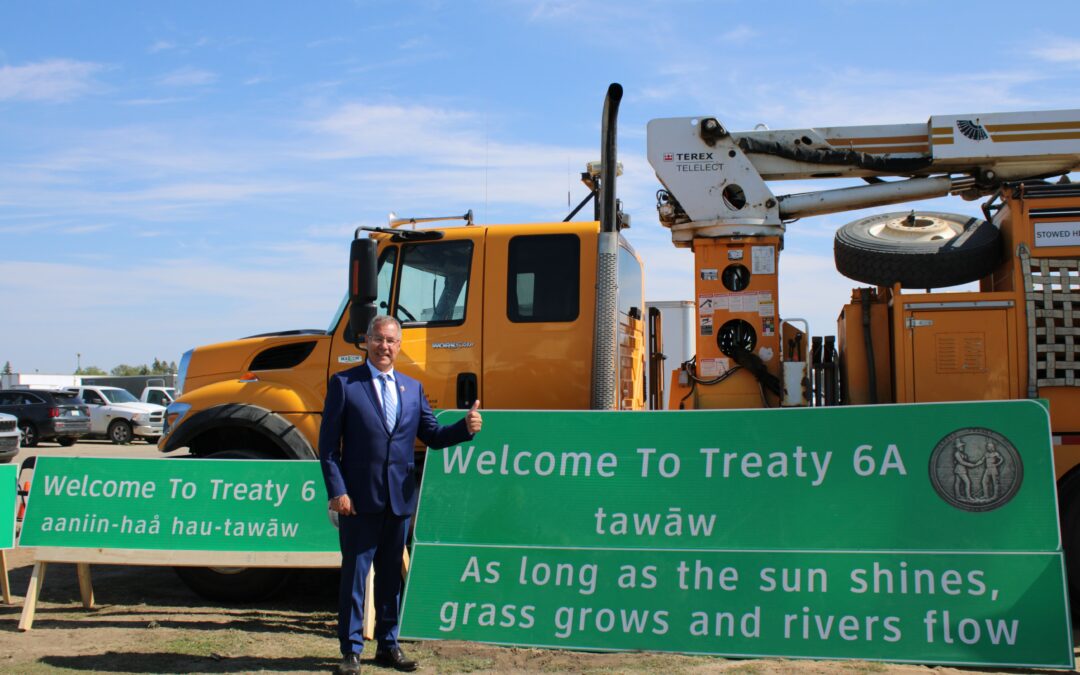Provincial leaders gathered in Prince Albert today to announce the addition of new highway treaty signs.
The special day kicked off with a pipe ceremony and a prayer by an elder at the Prince Albert Grand Council grounds on Chief Joseph Custer Reserve.
The new signs that were unveiled make Saskatchewan the first province in Canada to have all treaty boundaries marked on highways.
The signs have been an ongoing project between the government of Saskatchewan and the Office of the Treaty Commissioner for the past few years. In October of last year, a pair of treaty boundary signs were announced; today, the project is fully complete.
“At the basic level, the new signage provides valuable information for both the people of Saskatchewan and those who are traveling through the province. The marking of treaty lands can serve a deeper purpose as well; the signs help raise general awareness of the treaties, and maybe people driving through will ask questions based on what they see on the signs,” stated lieutenant governor of Saskatchewan, Russ Mirasty.
The signs will be placed in the locations below.
- Highway 2 north of Prince Albert to mark the Treaty 6 / Treaty 6A Boundary.
- Highway 102 / 905 southeast of Southend to mark the Treaty 6A / Treaty 10 boundary.
- Highway 55 east of Nipawin to mark the Treaty 5 / Treaty 6 boundary.
- Highway 955 north of La Loche to mark the Treaty 8 / Treaty 10 boundary.
“We worked to find the accurate treaty boundary locations for these signs, and we did that by using our First Nations elder’s oral history as well as the archives at our office at the OTC, treaty text that we have at our office, and the geographic information system,” said Office of the Treaty Commissioner of Saskatchewan Executive Director Angie Merasty.
Each of the new signs features Indigenous languages specific to their locations, the Treaty medals provided to First Nations following the Treaty negotiations, and the phrase that represents the spirit and intent of the Treaties, “as long as the sun shines, grass grows, and rivers flow.”
Mirasty stated he hopes other provinces will follow in Saskatchewan’s footsteps and add treaty boundary signs to their highways.
“We see the positive impact of having the signs; people talk about them and ask questions about them, and that’s one pathway to reconciliation and a better understanding of who we all are but more specifically how Indigenous people fit into the broader society,” he explained.
